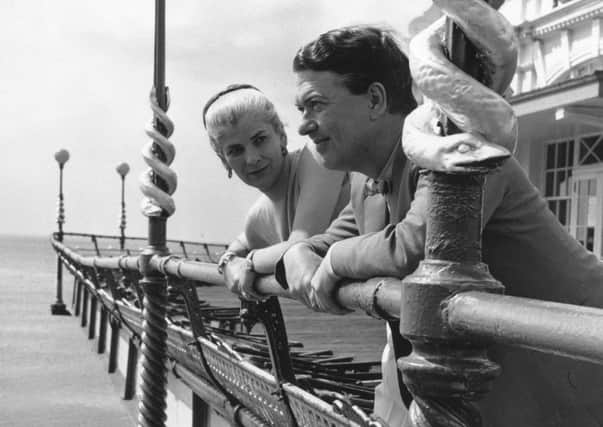Obituary: Elizabeth Jane Howard, CBE, novelist


Elizabeth Jane Howard found fame in her seventies when she published The Cazalet Chronicles. The tetralogy (later expanded) told of the lives of a wealthy family for a decade from 1937. The first two novels transferred successfully to television and Radio 4 began dramatising them two years ago. In the books Howard displayed a late literary maturity – she had always been a wonderful wordsmith and a riveting storyteller – but the setting for the novels, country house weekends and the London social scene, reflected her own youth and background. Howard captured the very essence of that lifestyle with a rare and delightful immediacy.
Howard was working almost to the end, finishing the fifth volume of her Cazalet Chronicles last year. She enjoyed writing and constructing plots and characters: “It’s the thing that makes me get up in the morning,” she said.
Advertisement
Hide AdAdvertisement
Hide AdHer striking looks, intelligence and artistic talents brought her many friends and she enjoyed many affairs. Her known lovers included Arthur Koestler, Laurie Lee, Cyril Connolly, Kenneth Tynan and Cecil Day-Lewis.
Elizabeth Jane Howard (known as Jane to her friends) was born into a well-off family – her father was a timber merchant and her mother had danced with the Ballets Russes. She was educated by governesses but on the outbreak of war in 1939 she escaped to a drama college in Devon where one of the other students was Paul Scofield.
When she was 19, she married the naturalist Peter Scott, then a naval officer some 14 years her senior and the son of the Antarctic explorer Captain Robert Scott.
It was the first of three rather disastrous marriages. Scott was often away on war service and they had a daughter who was brought up by the Scott family when the marriage ended.
After the divorce Howard wrote her first novel, The Beautiful Visit, which won the John Llewellyn Rhys Memorial Prize. It was criticised for being overly sentimental but it sold well and established Howard as a young writer of definite promise.
In 1956 she published The Long View – clearly based on the breakdown of her marriage to Scott – which did much to consolidate her reputation. The book is considered by many as her most accomplished work.
Her brief second marriage to the actor James Douglas-Henry in 1959 was not a success and in 1962 at the Cheltenham Literary Festival she met and fell in love with Kingsley Amis.
Howard organised the festival and had booked Amis to discuss sex and censorship in literature. There was an instant rapport and they married in 1965: Howard always said Amis’s most alluring quality was his ability to make her laugh and the two became the glamorous couple of the literary world.
Advertisement
Hide AdAdvertisement
Hide AdThey remained married for 18 years but it was never an easy domestic situation. Amis’s children – Martin, Philip and Sally – remained distant from Howard, she nursed her own mother and her brother stayed with them in their house in Hampstead, north London. Howard provided help for friends (including Elizabeth Taylor and Cecil Day Lewis) after serious operations.
Despite all this activity in 1965 Howard published After Julius – a poignant story of how the death of a patriarch disrupts a family – and the novel remained a strong personal favourite. A decade later she published A Companion for Lovers, a dark and rather gloomy book that reflected her own depressed condition. In 1980 Howard walked away from the marriage without an explanation. She had gone to a health farm and simply sent Amis a letter through her solicitors.
The divorce was acrimonious and Howard experienced a lonely decade leading a rather solitary existence. But her indefatigable spirit never left her and she took solace in writing. In 1982 she published Getting It Right, which again mirrored her own life – dealing with a man who could not get his relationships sorted out. Then two years later she decided to move out of London to Suffolk where she could indulge her passion for gardening and walking her beloved spaniels.
In Suffolk – with the encouragement of Martin Amis – she started writing the Cazalet books. Howard was keen not to write a catalogue of the great events but describe how those events affected individuals; she did so with unerring wit and insight. She had lived through the era and observed the social and domestic changes and then captured the eventful years with a keen eye.
Writing was her undoubted passion. “I find it much too anxious a business,” she once commented. “You cannot be a good writer without empathy.” She remained a much respected novelist and the Cazalet novels rightly brought her an international readership.
Howard, who was made a CBE in 2000, is survived by survived by her daughter.